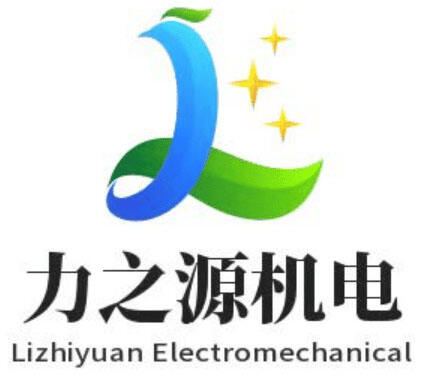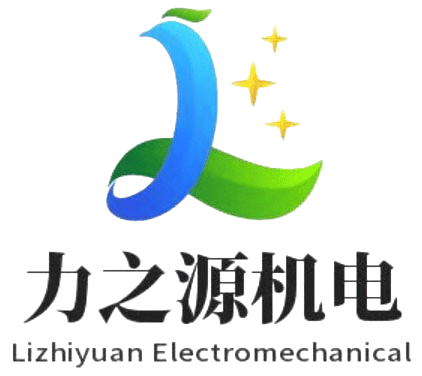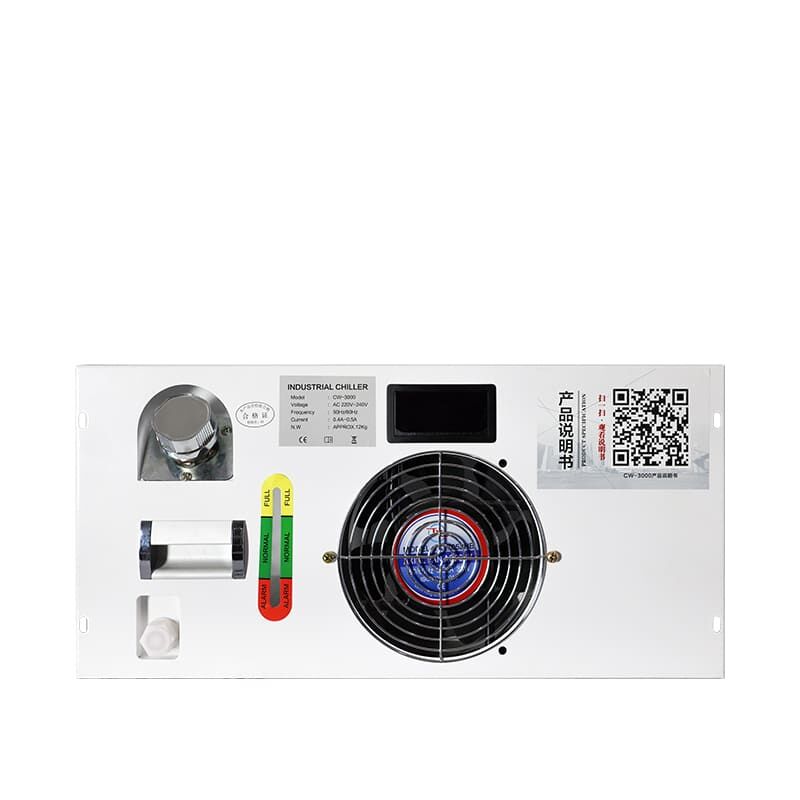Zrozumienie Chłodnia wody przemysłowa Pojemność
Określanie pojemności w przemysłowych chłodziarkach
Rozmiar przemysłowego chłodziarki to jej zdolność chłodzenia wyrażona w tonach lub kilowattach. Ten pomiar wskazuje, jak dobrze chłodziarka może usuwać ciepło z procesu lub przestrzeni chłodzenia. Pojemność jest bardzo ważna, ponieważ wpływa na wydajność chłodzenia i pojemność. Projekt i ocena efektywności chłodziarek oraz różnice temperatur, przy których działa chłodziarka, wszystko to wpływa na jej zdolność chłodzenia. Posiadanie solidnej wiedzy na temat takich pojęć jak ‘obciążenie chłodzenia’, czyli ilość energii cieplnej, którą chłodziarka musi rozproszyć, oraz ‘rzeczywista vs nominalna pojemność’, czyli różnica między oznaczoną pojemnością chłodziarki a jej rzeczywistą pojemnością podczas pracy, może znacząco ułatwić wybór odpowiedniej chłodziarki. Jeśli na przykład pojemność chłodziarki opiera się na wymaganiach dotyczących obciążenia chłodzenia, ta wiedza gwarantuje, że chłodziarka będzie działać tylko wtedy, gdy jest to konieczne, bez marnotrawienia energii. Odpowiednie dopasowanie rozmiaru chłodziarki zapewnia nie tylko wydajność operacyjną, ale także oszczędność energii, co prowadzi do optymalnego działania.
Dlaczego pojemność ma znaczenie dla modelu CW 3000
Wiedza, że CW 3000 to model, dostarcza kontekstu dla specyfikacji rozmiaru jednostki. Przemysłowy chłodziacz wody o lekkim zastosowaniu ten przemysłowy chłodziacz wody jest odpowiedni dla zastosowań przemysłowych, które wymagają pojemności chłodzenia. Wydajność zależy bezpośrednio od jej pojemności. CW 3000 jest "zamykany na klucz", aby zapewnić długotrwałość zdolności chłodzenia w różnych okolicznościach, zapewniając stabilne i niezawodne działanie zgodnie z literaturą fabryczną. Możesz oszczędzić znaczącą energię i poprawić wydajność, wybierając chłodziacz o odpowiedniej pojemności, takiej jak CW 3000. Na przykład chłodziacz, który ma pojemność równą obciążeniu chłodzenia i nie jest nadmiernie wielki, może uniemożliwić systemowi pracowanie zbyt ciężko. Minimizuje to zużycie i koszty konserwacji. W zastosowaniach procesowych chłodziacze przemysłowe są często dobrani według właściwych pojemności chłodzenia, co przynosi korzyści dla sukcesu operacyjnego, prowadząc do niższego zużycia energii i lepszego sterowania klimatem w środowisku procesu przemysłowego. Użycie chłodziacza o odpowiedniej pojemności, takiego jak CW 3000, umożliwia dobry bieg zamierzonego zastosowania.
Wskaźniki Pojemności Technicznej
Istnieje kilka elementów, które wyraźnie odróżniają przemysłowy system chłodzenia CW 3000 pod względem mocy technicznej: specyfikacje mocy chłodzenia/prężność przepływu. Model ten zapewnia rozpraszanie cieplne 50 W/°C i pojemność zbiornika 9 L, wystarczającą do łatwego chłodzenia w grawerowaniu węzłem CNC, cięciu laserowym i innym sprzęcie. Parametry te mają kluczowe znaczenie dla użytkowników, ponieważ są ściśle związane z wydajnością i niezawodnością systemu. CW 3000 ma przewagę konkurencyjną w porównaniu z innymi modelami na rynku ze względu na niewielki rozmiar, wygodne użytkowanie i wysoką wydajność kosztową. Przepływ wody i wysoki przepływ są idealne do chłodzenia jednej lampy laserowej Jego pojemność jest zgodna ze standardami branżowymi, i przetestowaliśmy je na boisku derby.
Parametry Wydajności Chłodzenia
Wydajność chłodzenia modelu CW 3000 pokazuje, jak nowe temperatury można szybko i łatwo osiągnąć w środowisku przemysłowym. Ważnymi czynnikami są Delta T, zapotrzebowanie na energię oraz zakres jego pracy. Na przykład Delta T oznacza zakres temperatur, jaki może kontrolować chłodnica, co jest istotne, aby zapewnić dokładną kontrolę temperatury w procesach produkcyjnych. Ważna jest nie tylko efektywność i minimalna efektywność chłodnicy, ale również jej wydajność, ponieważ ma ona bezpośredni wpływ na zdolność utrzymania optymalnych warunków pracy. Ponadto dodanie pomiarów sezonowej efektywności wpływa na całkowity koszt eksploatacji i pozwala zrozumieć możliwe oszczędności wynikające z inwestycji w oszczędzanie energii. Przeanalizowane przypadki zastosowań modelu CW 3000 wykazały, że optymalizacja tych parametrów prowadzi do znaczących popraw w efektywności i korzyściach finansowych.
Główne czynniki wpływające na moc chiller'a
Wpływ temperatury otoczenia
Stabilność chłodzenia przemysłowych chillerów, takich jak CW 3000, jest silnie wpływaniana przez temperaturę otoczenia. W miarę wzrostu temperatury otaczającej, chiller nie będzie działał tak efektywnie, a jego zdolność chłodzenia może się zmniejszyć. Jest to spowodowane zasadą podniesienia temperatury, czyli różnicą temperatur między powietrzem przychodzącym a temperaturą, jaką chcemy osiągnąć. Zwiększone podniesienie temperatury oznacza zwiększone zużycie energii, co może negatywnie wpłynąć na zdolność chłodzenia chillerów. Przygotowanie się na to jest ważne, aby zaplanować oczekiwane warunki pracy chillerów, które mogą skutecznie z tym radzić.
Badania wykazały, że drobne odchylenia temperatury otoczenia mogą mieć istotny wpływ na wydajność chłodnicy. Nawet niewielkie zwiększenie temperatury, na przykład, spowoduje znaczne wzrost zużycia energii i kosztów eksploatacji. Znajomość tych efektów umożliwi firmom podejmowanie inteligentnych decyzji podczas porównywania chłodnic – wybór chłodnicy, która może radzić sobie z oczekiwanymi punktami temperaturowymi, jednocześnie zapewniając niski koszt cyklu życia całego procesu.
Wymagania obciążeniowe i wymagania operacyjne
Ważne jest dokładne zmierzenie obciążenia i potrzeb operacyjnych podczas wybierania przemysłowego chilleru. Ponieważ te wymagania mogą znacznie się różnić w zależności od zastosowania, precyzja w obliczeniach jest kluczowa, aby upewnić się, że wybrany chiller skutecznie spełnia te potrzeby. Wymaga to zrozumienia równoważenia obciążenia, czyli równomiernego rozdziału zadania chłodzenia, aby maksymalizować pojemność i wydajność. W ten sposób firmy mogą uniknąć problemów takich jak przegrzanie, które może spowodować niezgodność lub nawet uszkodzić sprzęt.
Wykresy lub krzywe przedstawiające zmiany obciążenia są przydatne do opracowywania ich wpływu na wydajność chillerów. Te informacje pomogą w długoterminowym planowaniu systemu oraz w odpowiedzi na pytanie, jak zmienia się pojemność systemu w zależności od różnych poziomów popytu. To może umożliwić optymalizację działania chillerów dla maksymalnej efektywności i minimalizacji ryzyk związanych z nieoczekiwanymi awariami i drogimi kosztami energii.
Zastosowania i wymagania dotyczące pojemności
Systemy wycinania laserowego CO2
W świecie maszyn do wycinania laserowego CO2 chodzi głównie o dokładne chłodzenie, aby zapewnić, że Twoja maszyna utrzymuje maksymalną wydajność i nie psuje się. Chłodziwiec wodny CW 3000 dla rzeźnika laserowego, maszyny do wycinania laserowego może być pomyślnie stosowany w maszynach laserowych, a jest to jedno z najbardziej odpowiednich produktów do chłodzenia laserów. Chłodziwiec pomaga usunąć nadmiarowe ciepło występujące podczas procesu wycinania laserowego, właściwie utrzymując jakość wycinania. Studium przypadku CW 3000 odzwierciedla jego dobre wydajność; należy powiedzieć, że dobre chłodzenie sprawia, że laser pracuje lepiej i przedłuża żywotność lasera. Niedostateczne chłodzenie może spowodować gorsze cięcia i wcześniejsze zużycie sprzętu, co podkreśla potrzebę odpowiedniego chłodziwia. Użycie odpowiednio wymiarowanego chłodziwia, takiego jak model CW 3000, zapewni produktywność urządzenia i jakość cięcia materiału.
Zgodność z maszynami do rzeźbienia
Łatwość, z jaką CW 3000 może być używany w połączeniu z różnymi maszynami do drukowania, jest dalszym przykładem jego elastyczności. Aby działać najlepiej, maszyna do drukowania zależy od dokładnej kontroli temperatury, a CW 3000 spełnia te wymagania we wszystkich aspektach. Zapewnia spójne chłodzenie dla różnych zastosowań drukujących bez rezygnacji z aplikacji wrażliwych na temperaturę. Użytkownicy pisali entuzjastyczne opinie o CW 3000 i o tym, jak dużo lepiej ich maszyna do drukowania działa w połączeniu z jednostką chłodzenia. Dane wskazują również, że właściwy wybór chilleru, takiego jak CW 3000, może znacznie przedłużyć żywotność maszyny i poprawić jej wydajność, co zmniejsza czas przestoju produkcyjnego i konserwacyjnego. Ten szczegół jeszcze bardziej podkreśla potrzebę dopasowania pojemności chilleru do potrzeb maszyny dla najlepszych […]


